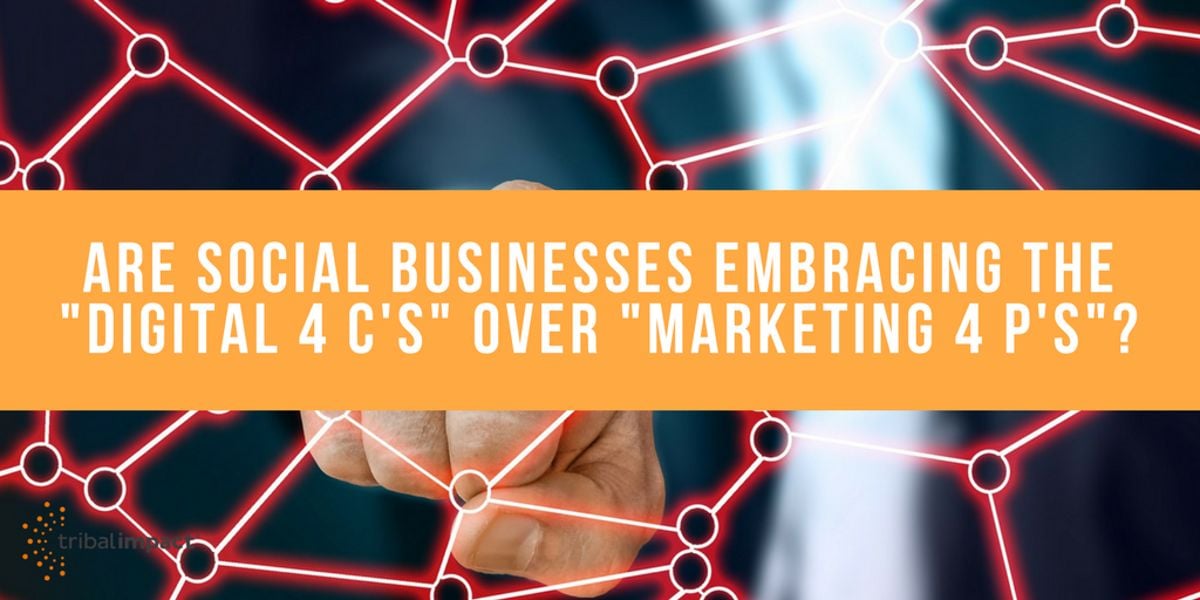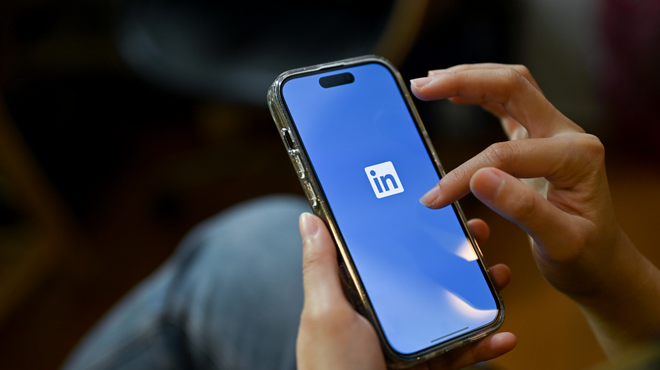
A couple of weeks ago I had lunch with an old friend - we hadn't seen each other for nearly 12 years. We worked together at IBM and took the CIM Post Graduate Marketing Diploma together and that's where we had a little giggle.
For some reason, I was in possession of all of her notes from the course so I proudly reunited them with her over lunch after moving them from one house to another (10 houses in all...I've moved a lot these last few years).
We were flicking through the 4 P's and discussing how much marketing had changed since the ‘old days’ and how 'our generation' were taught strategic marketing when digital wasn't even featuring on the syllabus.
The 4 P's are still relevant...it's just that previously companies could clearly differentiate themselves by focusing on 1-2 of the P's. However, digital has disrupted this model. Transparency has spawned open honesty...about your product, your service, your delivery and your price. Consumers expect nothing less than their last experience of exceptional customer service. The standard is getting higher and higher.
So here are some thoughts on how I believe the 4 P's have been accompanied by the 4 C's.
Product
 Today, a good product needs to come as standard. The digital age is hugely transparent. If your product is poor you’ll get found out. Online consumer reviews now dictate the how successful your product will be received.TripAdvisor, Check-a-trade or Trust Pilot – they’re all there to do one thing. Provide transparent insight into the quality of products that consumers have bought for the benefit of future consumers.
Today, a good product needs to come as standard. The digital age is hugely transparent. If your product is poor you’ll get found out. Online consumer reviews now dictate the how successful your product will be received.TripAdvisor, Check-a-trade or Trust Pilot – they’re all there to do one thing. Provide transparent insight into the quality of products that consumers have bought for the benefit of future consumers.
Price
 These days it’s pretty difficult to differentiate your product on price unless you’re a premium brand and invest heavily in your marketing. Price transparency challenges companies to be competitive. Data is available everywhere – on computers, on mobile devices and on tablets. As consumers browse shelves they can check online prices real-time and switch within seconds.Last week Tesco, a huge supermarket chain in the UK, launched their Brand Promise vowing to price match any branded product with other supermarkets. The difference will be paid back to you at the till as you pay for your shopping.
These days it’s pretty difficult to differentiate your product on price unless you’re a premium brand and invest heavily in your marketing. Price transparency challenges companies to be competitive. Data is available everywhere – on computers, on mobile devices and on tablets. As consumers browse shelves they can check online prices real-time and switch within seconds.Last week Tesco, a huge supermarket chain in the UK, launched their Brand Promise vowing to price match any branded product with other supermarkets. The difference will be paid back to you at the till as you pay for your shopping.
Place
 If availability were ever a differentiator, it probably needs reviewing. Amazon now offer their Amazon #PrimeNow (1 hour delivery…even on a Sunday) and many other retail outlets offering “order by midnight and have it delivered next day” services.Consumer expectations are set. Retail outlets not offering this level of service may pay the price of customers switching brands. Digital has dramatically shifted the balance of power when it comes to retail.
If availability were ever a differentiator, it probably needs reviewing. Amazon now offer their Amazon #PrimeNow (1 hour delivery…even on a Sunday) and many other retail outlets offering “order by midnight and have it delivered next day” services.Consumer expectations are set. Retail outlets not offering this level of service may pay the price of customers switching brands. Digital has dramatically shifted the balance of power when it comes to retail.
Promotion
 It’s a fact. People are less trusting of brands and more trusting of peers and influencers. Certainly in the B2B industry, nearly 70% of the buying process is complete before the buyer contacts the vendor.Buyers are educating themselves online. They’re researching and reading content prior to entering a sales cycle. They are interested in expert opinions and customer experiences.They are seeking authentic content – not necessarily branded content. Successful marketing now hinges on creating influencers, harnessing the power of advocacy and creating content that is relevant…not promotional.
It’s a fact. People are less trusting of brands and more trusting of peers and influencers. Certainly in the B2B industry, nearly 70% of the buying process is complete before the buyer contacts the vendor.Buyers are educating themselves online. They’re researching and reading content prior to entering a sales cycle. They are interested in expert opinions and customer experiences.They are seeking authentic content – not necessarily branded content. Successful marketing now hinges on creating influencers, harnessing the power of advocacy and creating content that is relevant…not promotional.
I've seen posts written about the 4 C's before but nothing that really addresses digital marketing. I believe that digital transformation is a chance for marketing to reinvent itself. Here’s why:
Customer
 Everything today is about the customer experience. Every brand touch point including the website, the chat window, the telephone conversation, the branded vehicle on the road…EVERYTHING contributes to brand perception. Smart companies are trying to map the digital journey as much as possible. Pre-empting where the customer will be at a certain point of their journey with content that will be relevant to them. However, digital platforms are very noisy. We’re bombarded with approximately 3000 branded messages a day and our attention span has reduced to just 8 seconds. Customers are picky and rightly so. There’s too much sub-standard content out there and its confusing buyers. The customer experience needs to be at the centre of every touch point.
Everything today is about the customer experience. Every brand touch point including the website, the chat window, the telephone conversation, the branded vehicle on the road…EVERYTHING contributes to brand perception. Smart companies are trying to map the digital journey as much as possible. Pre-empting where the customer will be at a certain point of their journey with content that will be relevant to them. However, digital platforms are very noisy. We’re bombarded with approximately 3000 branded messages a day and our attention span has reduced to just 8 seconds. Customers are picky and rightly so. There’s too much sub-standard content out there and its confusing buyers. The customer experience needs to be at the centre of every touch point.
Community
 Nurturing a community is probably the best long-term customer experience investment a company can make. It won’t happen overnight. It’s a long process. But it’s one of those competitive advantages that cannot easily be replicated. SAP is a brilliant example. A community of over 2M members made up of employees, customers, developers and even competitors! It was a transparent mash-up of thought leadership, technical Q&As, product ideas and feedback. A treasured asset and often the go-to place to test functionality, find inspiration and crowdsource innovation.Your community also has the power to become an army of advocates, defending your brand and fighting your corner. They are also a sounding board to tell you when things aren’t great so treat your community with respect. Don’t spam it with marketing messages. Nurture it, facilitate good conversation and encourage healthy contribution.
Nurturing a community is probably the best long-term customer experience investment a company can make. It won’t happen overnight. It’s a long process. But it’s one of those competitive advantages that cannot easily be replicated. SAP is a brilliant example. A community of over 2M members made up of employees, customers, developers and even competitors! It was a transparent mash-up of thought leadership, technical Q&As, product ideas and feedback. A treasured asset and often the go-to place to test functionality, find inspiration and crowdsource innovation.Your community also has the power to become an army of advocates, defending your brand and fighting your corner. They are also a sounding board to tell you when things aren’t great so treat your community with respect. Don’t spam it with marketing messages. Nurture it, facilitate good conversation and encourage healthy contribution.
Collaboration
 To get the best out of your workforce and your relationship with customers, collaboration is key. Too often, internal collaboration tools like Jive Software, SAP Jam or Yammer are utilised as another place to store documents along with Microsoft SharePoint etc.Sound familiar? Collaboration tools, when used correctly, can massively improve productivity, reduce the quantity of emails flying around and can support a more transparent working environment.Naturally, leaders may not be too accepting of such change because suddenly those conversations that used to happen around the coffee machine are now visible to everyone internally. However, I believe this is a cultural bump that organisations just need to get over in order to achieve true digital transformation. It may be painful to start with, but embrace the transparency. In the long run this will make your organisation a better place.
To get the best out of your workforce and your relationship with customers, collaboration is key. Too often, internal collaboration tools like Jive Software, SAP Jam or Yammer are utilised as another place to store documents along with Microsoft SharePoint etc.Sound familiar? Collaboration tools, when used correctly, can massively improve productivity, reduce the quantity of emails flying around and can support a more transparent working environment.Naturally, leaders may not be too accepting of such change because suddenly those conversations that used to happen around the coffee machine are now visible to everyone internally. However, I believe this is a cultural bump that organisations just need to get over in order to achieve true digital transformation. It may be painful to start with, but embrace the transparency. In the long run this will make your organisation a better place.
Communication
 Where do I start? Well, first Communication isn’t a department, it’s the fabric of a business. It’s everyone’s responsibility.Why? Because digital has changed everything. Leaders who bury their heads in the sand spouting “I’m too old for social media” will soon have a shock when they suddenly find a majority of their workforce is made up of the millennial generation. A generation that have only ever worked in a wired world.Communication is now transparent across the organisation and across the ecosystem. Customers may take to social media to complain about an experience and in most cases expect a response within 1 hour. Failure to do so will most likely lose you a customer or worse, create a brand detractor – someone who actively works to discourage others to use products or services
Where do I start? Well, first Communication isn’t a department, it’s the fabric of a business. It’s everyone’s responsibility.Why? Because digital has changed everything. Leaders who bury their heads in the sand spouting “I’m too old for social media” will soon have a shock when they suddenly find a majority of their workforce is made up of the millennial generation. A generation that have only ever worked in a wired world.Communication is now transparent across the organisation and across the ecosystem. Customers may take to social media to complain about an experience and in most cases expect a response within 1 hour. Failure to do so will most likely lose you a customer or worse, create a brand detractor – someone who actively works to discourage others to use products or services
So, there you have it. My version of the 4 C's in relation to social businesses and this new ‘digital marketing’ era that we find ourselves in.
Have I missed any?


